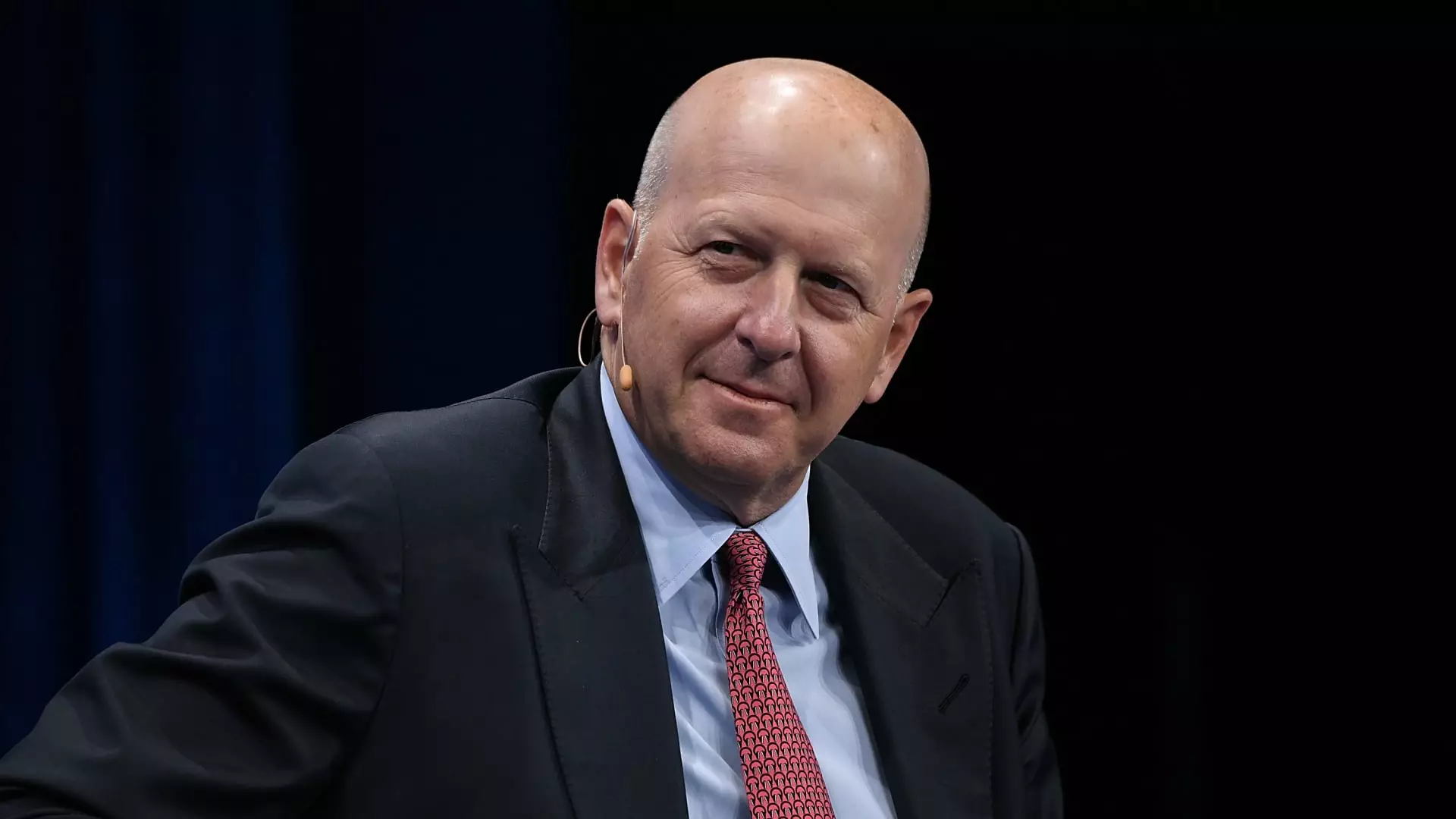Goldman Sachs, the renowned Wall Street brand, has long been recognized for its dominance in trading and investment banking. However, since the 2008 financial crisis, these high-profile businesses have lost favor with investors. As a result, areas like wealth and asset management have emerged as more valuable, stable, and fee-generating components of Goldman’s operations. This shift has brought both opportunities and challenges for the firm, as it seeks to capitalize on the rise of alternative assets and cater to the growing fortunes of the ultrarich.
In response to the changing dynamics of the financial industry, Goldman CEO David Solomon has strategically pivoted towards asset and wealth management. This move aligns the firm with two significant trends: the increasing popularity of alternative assets, including private equity, and the accumulation of wealth by the ultrarich. By leveraging its reputation and expertise in savvy investing, Goldman aims to tap into these lucrative markets.
However, concerns have surfaced regarding a potential brain drain at Goldman Sachs. The recent departure of former asset management co-head Julian Salisbury to a smaller rival, as well as Luke Sarsfield’s earlier exit, has raised questions about the firm’s ability to retain top talent. Despite these challenges, Goldman remains confident in its deep bench of talent and highlights the long average tenure of its partners as an indicator of stability.
The Universe of Financial Instruments
Goldman Sachs’ portfolio managers engage in a wide range of financial bets, spanning various instruments and asset classes. From low-risk money market funds to corporate bond funds, stock ETFs, mutual funds, and alternative investments such as private equity, private credit, real estate, and hedge funds, the firm covers a vast spectrum of investment opportunities. This diversified approach sets Goldman apart from its rivals, JPMorgan and Morgan Stanley, which focus more heavily on traditional assets like stock funds.
Goldman Sachs earns revenue through management and incentive fees, which increase as the firm attracts more assets under supervision. Presently, Goldman oversees a substantial $2.71 trillion in assets as of June 30, including wealth management assets. The industry has shifted towards a model where financial advisors charge fees based on a percentage of clients’ assets, often ranging from 1% to 2% annually. In addition to investment management fees, advisors may also earn fees for providing loans or other products tailored to the wealthy.
When it comes to serving the ultra-rich, defined as individuals with at least $30 million to invest, Goldman performs exceptionally well. A company presentation indicates that approximately 8% of this lucrative cohort in the U.S. entrusts their wealth to Goldman Sachs, with an average of $60 million per client. However, the firm has a smaller market share among the high-net-worth segment, which comprises individuals with assets ranging from $1 million to $10 million. Goldman only holds about 1% of this market, highlighting an area for potential growth.
Challenges in the Trading and Advisory Division
Despite Goldman Sachs’ strategic focus on asset and wealth management, the firm remains intertwined with the ups and downs of Wall Street. The trading and advisory division generated two-thirds of Goldman’s $23.1 billion in revenues this year. As witnessed during the pandemic, periods of booming deals and trading can quickly turn into busts, leading to a decline in investment banking profits. Goldman Sachs experienced the steepest profit drop among the six largest U.S. banks, emphasizing the urgent need for sustainable sources of growth.
For CEO David Solomon, success in asset and wealth management would serve as a vital counterpoint to criticisms surrounding his previous decisions, leadership style, and hobbies. Solomon has made tough decisions to streamline investment operations, focusing on raising external funds while reducing in-house wagers. This approach, though disruptive to insiders accustomed to autonomy, reflects Solomon’s strategic vision for the future of Goldman Sachs.
Amidst the turbulence caused by organizational changes, Goldman Sachs’ asset and wealth management division has shown progress in meeting its fee and fundraising objectives. The firm is on track to generate at least $10 billion in fee revenue by the following year. Furthermore, total assets under supervision increased by $42 billion to reach $2.71 trillion in the second quarter. Although Solomon remains cautious about the timing of meaningful margin improvement in asset management, he expresses confidence in the strategic decisions made and emphasizes the firm’s commitment to progress.
As Goldman Sachs navigates the evolving landscape of the financial industry, it has recognized the value and potential in asset and wealth management. By capitalizing on the rise of alternative assets and catering to the ultrarich, the firm aims to secure sustainable sources of growth. However, challenges persist, including talent retention, market share expansion among the high-net-worth segment, and the interdependence with Wall Street’s volatility. Despite these obstacles, Goldman Sachs remains optimistic about its strategic decisions and the progress it is making on its asset management journey.


Leave a Reply